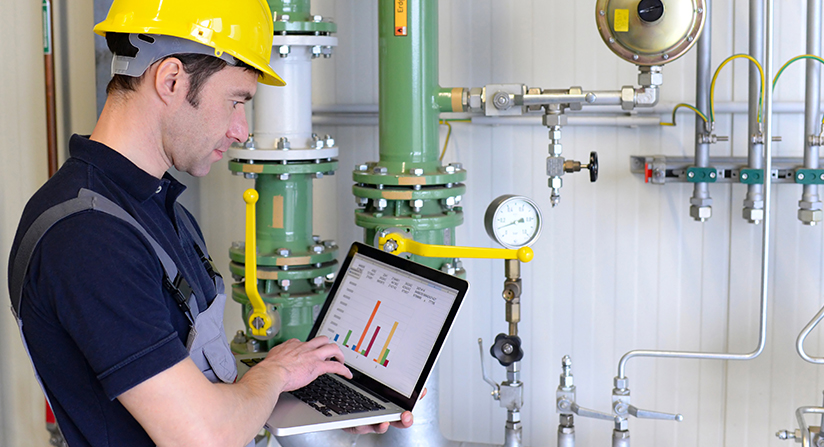Manufacturing businesses demand versatility, adaptability, and resourcefulness. In this tech-savvy world, every small and large-scale organization needs to gain greater visibility of data and operations so that processes are streamlined and time is efficiently used.
Smart manufacturing is a broad term that means modern technologies like IoT, Artificial Intelligence, Machine Learning, Big Data, etc. are used for allocating resources, handling materials, and streamlining production processes.
So how do you maximize operational efficiency in the manufacturing industry? And how can smart manufacturing enhance it?
Operational Efficiency
Operational efficiency is the ability of an organization to produce high-quality products cost-effectively and efficiently. To achieve operational efficiency, a company needs to:
- Minimize redundancy
- Utilize various manufacturing methods
- Optimize resources
Issues like delayed production, waste, and poor planning hamper business growth. Monitoring end-to-end processes can encourage operational efficiency and help managers work on areas for improvement.
Simply put, operational efficiency revolves around these ideas – asset utilization, employee productivity, operational cost reduction, and more. When output to input ratio increases, it improves operational efficiency. In this blog, we will explain the six pillars of operational efficiency in an organization and how smart manufacturing technology can strengthen them.
The Six Pillars of Operational Efficiency
- Equipment
One of the most important aspects of an efficient manufacturing environment is the quality of equipment used. In this modern manufacturing environment, connected equipment, sensors, and intelligent machines ensure easy collaboration for critical manufacturing operations. When existing equipment is retrofitted with sensors, it lets you identify errors and predict potential machine failure. Modern machines can be linked to the network to improve visibility and optimize resources.
- Workforce
Assigning tasks and performing them manually has almost become a thing of the past. With smart wearable gadgets like Daqri’s helmet and Apple watches, manufacturing operations have become less cumbersome. Next-generation robots can collaborate with humans and create augmented reality for the industry’s workforce. This may include 3D mapping, visual instructions, and real-time alerts.
Manufacturing organizations that have integrated a human workforce with robots find workflow more efficient. And, every operation can be automated and visible online via an intelligent software solution like an enterprise resource planning software. This software helps businesses optimize their overall operations.
- Material supply chain
Most manufacturers use a Just in Time methodology (JIT) inventory management method to reduce costs and issues related to inventory backlog. Although this method has proved useful, new technological advancements now automatically monitor customer demand and stock quantities. RFID tags and scanners are used to track the movement of items anywhere in the organization which helps plant operators gain insight into the processing of raw materials and the dispatching of finished goods.
Other intelligent ERPs and smart manufacturing functionality can help you understand weather conditions, price volatility, potential risks, and traffic conditions. This functionality helps businesses effectively manage their supply chain to avoid production delays.
- Business process
Manufacturers are now abandoning static business processes and automating them. This allows them to maintain their competitiveness in the market by serving their customers more effectively.
Enterprise Resource Planning software, when integrated with a Manufacturing Execution System, enables real-time visibility, traceability of resources, optimized workflow, and effective use of assets.
However, today’s manufacturers are going beyond the Manufacturing Execution System to stand out from the crowd. Below are some of the ways:
- New technologies like IoT, Blockchain, AI, Cloud, etc. enable a bird’s eye view of the business and centralization of data across all departments. This provides a transparent work environment that reduces redundancy and errors.
- Using mobile technology, managers can assign tasks to employees without being present in the factory. They can also evaluate performance by reviewing digitally created graphs and charts on their handheld devices or laptop.
- By transforming from a manually-driven company to an automated one, you can save time and effort, reduce errors, and focus on crucial activities.
- Predictive analysis in smart manufacturing allows you to anticipate potential customer demand or machine breakdown by offering real-time alerts. This saves you from expensive downtimes and declining customer satisfaction.
- Platform
Businesses use smart sensors and machines to manage operations and forecast supply and demand. Deploying a platform that facilitates IIoT and a host of modern technologies can help to optimize your business. It can manage and authenticate a large number of devices working for the company. Having visibility into operational risk is crucial for organizations to minimize unfortunate incidents. IoT detection and response algorithms adhere to mission-critical constraints.
- The business platform should be easily connected with IT/OT security
- It facilitates real-time analytics, data ingestion and provides data insights
- Business operations, when they work on AI-based algorithms, manage a huge amount of documentation and provide energy efficiency and significant savings
Conclusion
The pace of progress that manufacturers are making towards smart manufacturing is dependent on a variety of factors – agility in deploying industrial security solutions, speed to reskill workers, level of investment, willingness for technological change, etc.
If you have any questions regarding digital transformation or manufacturing ERP, please contact us
Follow Us





